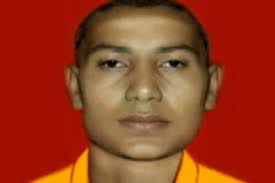 Gaya, Jul 16: The National Investigation Agency (NIA), probing the serial bomb blasts in Bodh Gaya recently, on Tuesday released two sketches of a suspect on the basis of eyewitness accounts and CCTV footage.
Gaya, Jul 16: The National Investigation Agency (NIA), probing the serial bomb blasts in Bodh Gaya recently, on Tuesday released two sketches of a suspect on the basis of eyewitness accounts and CCTV footage.
NIA released two sketches, one in which the suspect is wearing a mask and another bare face, on its website.
Sources in NIA said that the sketches have been released on the basis of details provided by three eyewitnesses who saw the suspect before the blasts on July 7 and also material emanating from CCTV footage.
Among the witnesses, whose names have been kept secret for probe purposes, two are foreigners and one local. The foreigners are from Sri Lanka and Thailand while the third one is a local Gaya native, the sources said.
The suspect in monk attire is also seen moving around in the temple in the wee hours (around 3:30am to 4:30am) of July 7.
NIA has also released CCTV footage and sought information about the suspect.
The agency has already announced a reward of Rs 6 lakh for providing information about the blasts suspect.
Ten bomb blasts took place in the famous Buddhist temple town of Bodh Gaya on July 7 in which two monks were wounded. While four explosions took place inside the Mahabodhi shrine campus, the rest exploded elsewhere in Bodh Gaya. Three live bombs were also defused by the security forces.
Considering sensitivity of the matter, the Bihar government had handed over the inquiry into the blasts to NIA.
NIA had earlier detained two natives of Gaya from Maoist-infested Barachhati and four youngsters, including a girl, in Patna in connection with the incident.
But, they were all released for want of evidence.





Comments
Add new comment